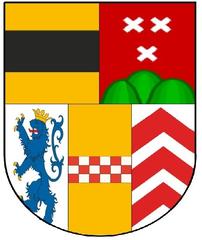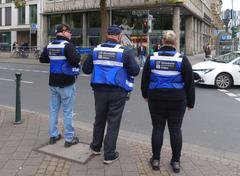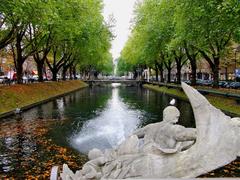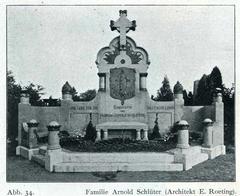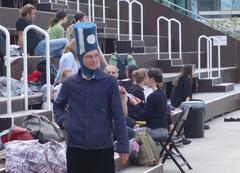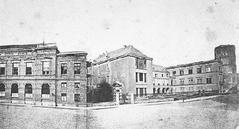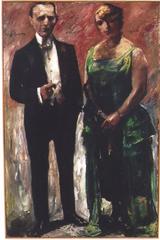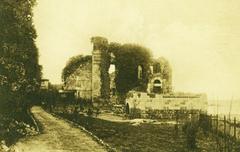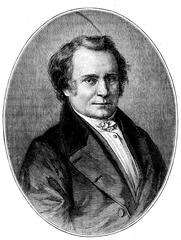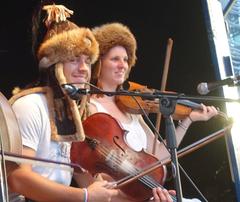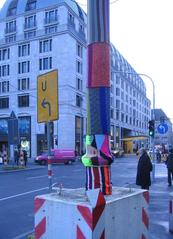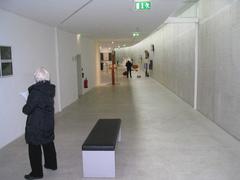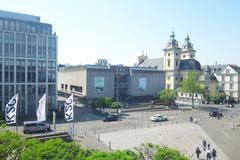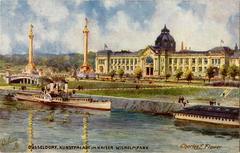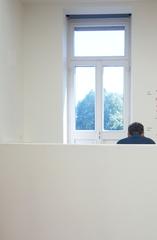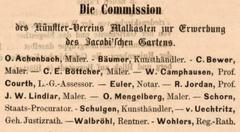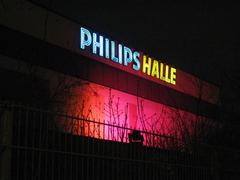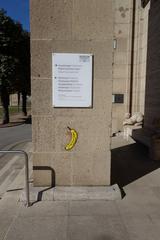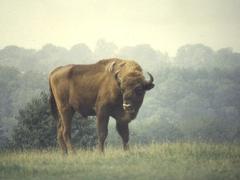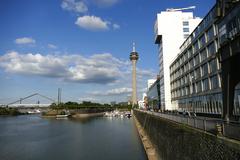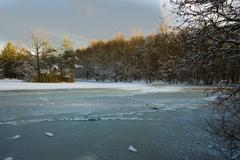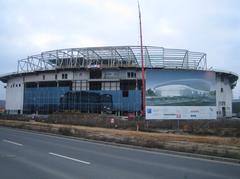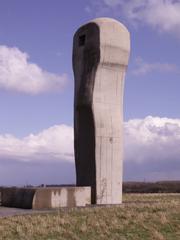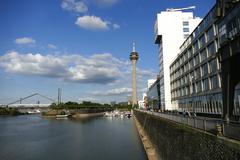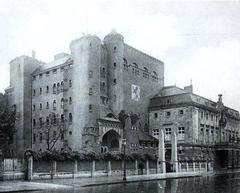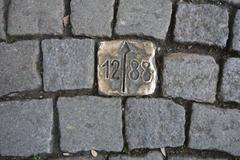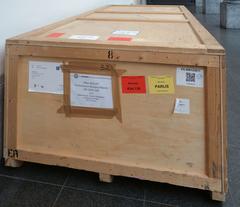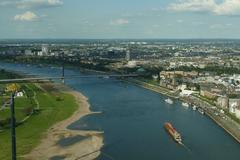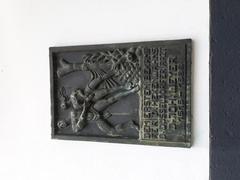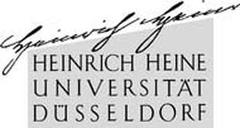Visiting Naturschutzgebiet Forst Eller in Düsseldorf: A Complete Guide
Date: 24/07/2024
Introduction
Nestled in the southeastern part of Düsseldorf, Germany, the Naturschutzgebiet Forst Eller holds a unique position as both a site of historical importance and a sanctuary for biodiversity. As the oldest nature reserve in Düsseldorf, the forest has seen a transformation from an area of intensive forestry to a model of ecological management. The Eller Forst was first designated as a protected area in 1935, marking the beginning of a long journey towards conservation (Wikipedia). Over the decades, it has expanded to encompass 96.2 hectares, offering a refuge for various plant and animal species, many of which are threatened or endangered. Visitors to the Eller Forst can immerse themselves in its rich history, explore its diverse habitats, and witness the ongoing efforts to maintain and enhance its natural beauty. With no entrance fee and a variety of trails and activities available, it is an accessible and enriching destination for nature enthusiasts and history buffs alike. This guide aims to provide comprehensive information on the Eller Forst, including its historical significance, visitor tips, and the unique ecological features that make it a must-visit site in Düsseldorf.
Table of Contents
- Introduction
- History and Significance
- Visitor Information
- Historical Landscape and Utilization
- Ecological Success and Biodiversity
- Conservation Goals
- Visitor Experience and Educational Value
- Special Events and Guided Tours
- Conclusion
- FAQs
History and Significance
Establishment and Early Protection Efforts
The Naturschutzgebiet Forst Eller holds the distinction of being the oldest nature reserve in Düsseldorf. Initial steps towards its protection were taken in 1935 when parts of the area were designated as the “Vogelfreistätte Eller Forst” (Wikipedia). This early designation underscores the area’s long-standing ecological importance and the foresight of conservation efforts in the region.
Expansion and Legal Recognition
The formal recognition of the Eller Forst as a nature reserve came in 1954 under the key number D-001, expanding its protected status to cover approximately 96.2 hectares (Wikipedia). This legal recognition was crucial in ensuring the preservation of its diverse habitats, which include ancient forest stands, open wet meadows, and adjacent water bodies like the Unterbacher See.
Transition to Ecological Management
A significant shift in the management of the Eller Forst occurred in 1968 when the city of Düsseldorf acquired the forest. This acquisition marked a move away from intensive forestry practices towards an ecologically oriented management approach. The primary goal was to promote a natural deciduous forest that aligns with the varied site conditions within the reserve (Düsseldorf.de).
Certification and Natural Development
Since the year 2000, the Düsseldorf city forest, including the Eller Forst, has been certified according to the criteria of the Forest Stewardship Council (FSC). This certification emphasizes sustainable forest management practices. Notably, 77.2 hectares of the Eller Forst have been designated as reference areas where no active management occurs, allowing the forest to develop naturally. This approach aims to observe the natural regeneration processes and compare them with conventionally managed forests (Düsseldorf.de).
Visitor Information
Visiting Hours
The Naturschutzgebiet Forst Eller is open to visitors year-round. However, the best times to visit are during daylight hours to fully appreciate the beauty and biodiversity of the area.
Tickets
There is no entrance fee for visiting the Naturschutzgebiet Forst Eller, making it an accessible destination for all nature enthusiasts.
Travel Tips
- Getting There: The reserve is accessible via public transport, biking, or car. Parking is available near the entrance.
- What to Bring: Comfortable walking shoes, a camera for capturing the scenic views, and binoculars for bird watching.
- Nearby Attractions: The Unterbacher See and the historic city center of Düsseldorf are nearby and worth a visit.
Historical Landscape and Utilization
The Eller Forst’s landscape is a remnant of a historically more extensive wetland area known as the “Unterbacher Bruch.” The large-scale drainage of this area began around 1820, transforming it into arable and forest land. Despite these changes, the area retained its ecological significance, with activities such as reed and sedge harvesting for livestock bedding and peat extraction from the low moor areas continuing into the early 20th century (Düsseldorf.de).
Ecological Success and Biodiversity
The Eller Forst’s transition to an ecologically managed forest has been a significant success. The area now features “primeval forest-like” landscapes, providing valuable insights into the forest’s rejuvenation potential. The preservation of diverse habitats, including alder swamp forests and oak-hornbeam forests, alongside open wet meadows and reed beds, supports a wide range of threatened animal and plant species (Wikipedia).
Conservation Goals
The primary conservation objectives for the Eller Forst include maintaining and developing its near-natural deciduous forests, particularly the swamp and oak-hornbeam forests, in conjunction with open wet meadows and reed beds. These habitats are crucial for the survival of endangered species, making the Eller Forst a vital area for biodiversity conservation (Wikipedia).
Visitor Experience and Educational Value
The Eller Forst is not only a haven for wildlife but also a valuable recreational and educational resource for the residents of Düsseldorf. The forest’s diverse landscapes and rich biodiversity offer numerous opportunities for nature observation and environmental education. Trails like the Siebenbrückenweg provide visitors with access to various habitats, where they can observe species such as the reed warbler and the rare elm hairstreak butterfly (Komoot).
Special Events and Guided Tours
The forest occasionally hosts special events and guided tours, which provide deeper insights into its ecological and historical significance. These events are perfect opportunities for visitors to learn more about the conservation efforts and the unique biodiversity of the area.
Conclusion
The Naturschutzgebiet Forst Eller stands as a testament to the long-term benefits of dedicated conservation efforts. Its history of protection, transition to ecological management, and ongoing natural development highlight the importance of preserving natural landscapes for future generations. The Eller Forst continues to be a critical area for biodiversity, offering both ecological and recreational value to the community.
FAQs
What are the visiting hours for Naturschutzgebiet Forst Eller?
The reserve is open year-round during daylight hours.
How can I buy tickets for Naturschutzgebiet Forst Eller?
There is no entrance fee; the reserve is free to visit.
What should I bring when visiting Naturschutzgebiet Forst Eller?
Comfortable walking shoes, a camera, and binoculars for bird watching are recommended.
Are there any guided tours available?
Yes, the forest occasionally hosts guided tours. Check the official website for upcoming events.
Stay Up to Date
For more information and updates, visit the official website or follow on social media. Don’t forget to download the Audiala app for the latest news and updates on Naturschutzgebiet Forst Eller and other related posts.
References
- Wikipedia (n.d.). Naturschutzgebiet Eller Forst Wikipedia
- Düsseldorf.de (n.d.). 85 Jahre Naturschutzgebiet Eller Forst Düsseldorf.de
- Komoot (n.d.). Ausflugsziele rund um den Forst Eller Komoot

